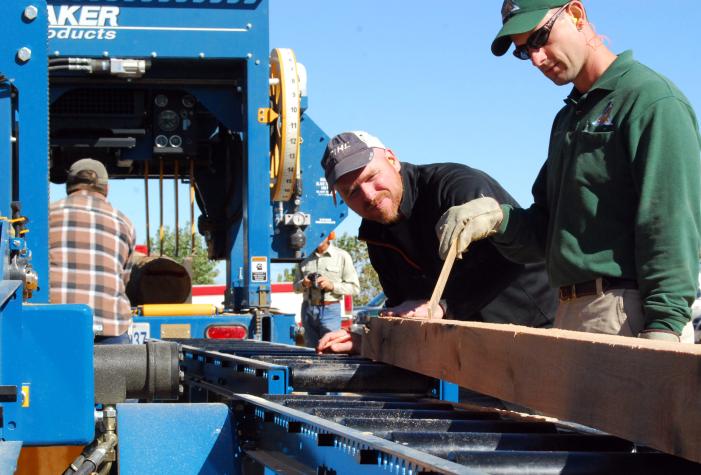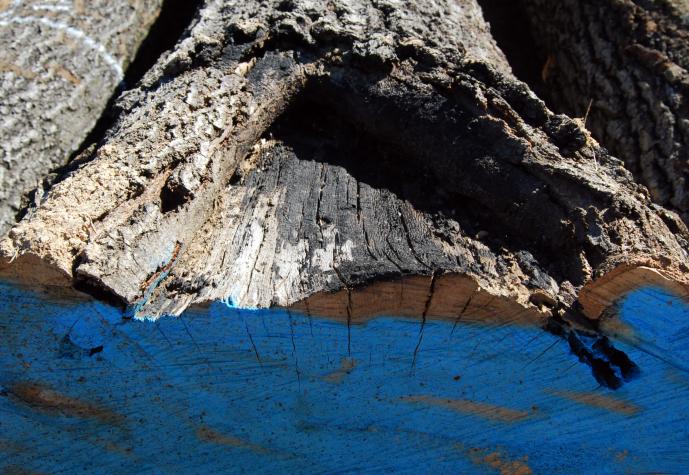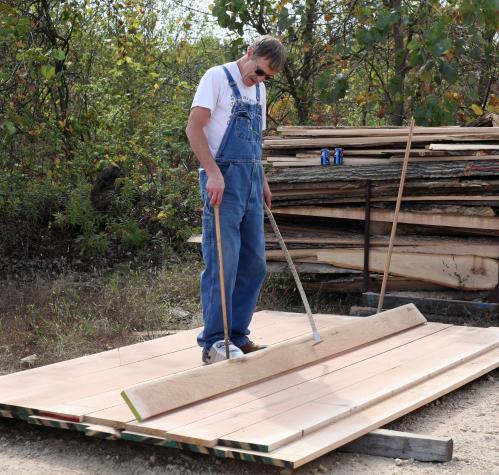Crafting a tool to inform fire management.
COLUMBIA, Mo. – To burn, or not to burn? That’s a question natural resource managers have asked themselves for years—often coming up with conflicting answers. Joe Marschall, research specialist at the Missouri Tree Ring Laboratory at the University of Missouri College of Agriculture, Food and Natural Resources, seeks to bring science to that debate.
Marschall, who is also pursuing a master’s degree in forestry at MU, notes that not all natural resource managers see eye to eye on prescribed burning in areas with merchantable timber. “People all across the country are talking about this; prescribed fire is more and more often used as a management tool,” Marschall said.
However, its use is hotly contested. Marschall recently presented a poster summarizing his findings at a natural resources conference. The first two people who looked at it, a forester and a wildlife manager, both from Kentucky, started arguing about fire management.
Marschall has created a tool to systematically assess the value loss in lumber quality of red oak trees due to prescribed fire.
“It’s a tool that will enable a forest manager to go out in the woods and determine what value loss in timber products a particular tree has experienced to date,” he said. “It’s a snapshot and a solid model—anyone can go out and do it.” The equipment for the job: Marschall’s chart and a ruler.
The study was sparked by a request from the Missouri Department of Conservation (MDC). Researchers at the Missouri Tree Ring Laboratory did a study a few years ago looking at volume loss from fire damage, not at lumber product value loss.
MDC asked them to expand the study. In the first study, researchers measured the volume injured by fire by taking cross sections from the trees. In Marschall’s study, they actually harvested and milled the lowest log (usually the only portion of the tree impacted by fire) of fire-injured trees into dimensional lumber.
Making the cut
The team harvested trees from three MDC conservation areas in southern Missouri with known prescribed fire histories: Peck Ranch in Carter County, Graves Mountain in Wayne County, and Lead Mine Conservation Area in Dallas County.
About 30 trees were felled and harvested from each site. They partnered with Baker Products of Ellington, Mo., to mill the logs into lumber. Marschall instructed the sawyer to ignore the fire damage and cut for the highest grade possible. A grader trained by the National Hardwood Lumber Association evaluated and scored each of the 1,315 boards for their actual value and determined what their value would be without fire defects, if fire defects were present.
Marschall noted that the slabbing process—where the sawyer trims and squares the log on the sawmill—often removes much of the area damaged by fire, especially if the damage is less than five years old.
“What we’re after is solid information in an area where there wasn’t solid information,” Marschall said. “With this data, managers might change the way they harvest and not leave the trees with defects in the forest.”
Rooted in tree science
Marschall has worked in the Missouri Tree Ring Laboratory for the last eight years. An interest in conservation and maintaining the well-being of natural resources led him to study and work at MU. He’s been able to further his academic research while gaining hands-on experience in the lab and at field sites across the country, including Pennsylvania, Nebraska, Arkansas, Kentucky, Tennessee, California, Oklahoma and Missouri.
He was recently appointed as the consortium coordinator for the Oak Woodlands and Forests Fire Consortium, a network encompassing nearly 1 million hectares in 11 states with a mission to “provide fire science to resource managers, landowners, and the public about the use, application, and effects of fire.”
Missouri forests cover more than 14 million acres—nearly twice that of Iowa, Illinois, Kansas and Nebraska combined. Nearly 30,000 people work in the forestry industry, which generates $1.7 billion annually.
The effects of prescribed fire on forests will continue to be a burning topic as more research is produced and the team works to extrapolate their findings to the landscape level.
CAFNR is the University of Missouri's College of Agriculture, Food and Natural Resources — a collection of academic programs merging personalized teaching, advising and advanced research with global impact. Founded in 1870, today we're a research and educational leader ensuring sustainability for generations to follow. CAFNR is changing agriculture, food and natural resources — the core components of society that impact what we eat where we live and how we'll face tomorrow.


